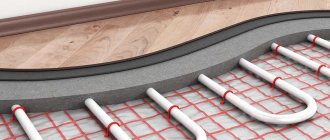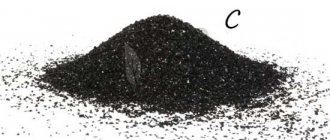Here you will learn:
- What is biofuel
- Biofireplace device
- Biofuel properties
- Types of biofuels and their features
- Composition and fuel consumption for biofireplaces
- How to make biofuel yourself
- Industrial biofuel
- Review of popular brands
- Safety rules for using a biofireplace
Biofuel for a fireplace is an environmentally friendly liquid that is used in the operation of a biofireplace. It is obtained from bioethanol. This fuel is safe for children and adults.
What is biofuel
Biofuel is an environmentally friendly material produced from bioethanol. It is a colorless and odorless liquid. It is highly flammable. During combustion, it breaks down into water and carbon dioxide, so it is safe for indoor use.
The properties of biofuels are as follows:
- Ethanol, which is part of the liquid, during combustion breaks down into steam and carbon monoxide and is accompanied by the release of energy. Absolutely harmless to the human body and does not smell.
- There are no solid decay products (soot, ash) during the operation of the eco-fireplace.
- Combustion efficiency reaches 95%.
- Liquids with the addition of sea salt have the crackling effect of natural firewood.
- When fuel burns, the flames are similar in color and shape to the fire in a classic fireplace.
The basis of biological fuel is ethanol, of plant origin. It is obtained by fermenting the sugars of most plant crops, such as wheat, beets, potatoes, sugar cane, bananas and others. However, this type of fuel is not sold in its pure form, but is required to denature the alcohol.
For additional effects, dyes or sea salt are added to the liquid.
Ecofuel has the following characteristics:
- During combustion it does not form ash.
- Does not emit harmful gases.
- It is environmentally friendly.
- Has a long burning period.
- Easy to use.
Environmentally friendly fuels are produced all over the world. The leading positions in the production of this fuel belong to South Africa, India, and China.
The following types of biofuels are distinguished:
- Biogas - waste from garbage and production is subjected to pre-treatment and gas is released from it, an analogue of natural gas.
- Biodiesel is obtained from natural oils and fats of biological origin (animal, microbial, vegetable). The main raw materials for the production of this type of fuel are food industry waste or palm, coconut, rapeseed, and soybean oils. It is most widespread in Europe.
- Bioethanol is an alcohol-based fuel, a gasoline substitute. Ethanol is produced by fermenting sugars. The raw material for production is cellulosic biomass.
The advantages of environmentally friendly fuel include the following:
- During the combustion of fuel, smoke, harmful gases, soot and soot are not generated.
- The intensity of the flame and heat transfer during biofuel combustion can be adjusted.
- The fuel block and individual structural elements are easy to clean.
- The design does not require the installation of air exhaust structures.
- Biofireplace fuel is easy to transport and store.
- No waste during storage, unlike solid fuel.
- There is no need to create a separate room for storing large amounts of fuel.
- Heat transfer during fuel combustion is 95%.
- During the combustion of ecofuel, the air in the room is humidified due to the release of steam.
- Flame return is excluded.
- Thanks to the design of the bio-fireplace and the structural features of the biofuel burner, the design is fireproof.
- Low fuel cost with low consumption.
Using environmentally friendly fuel is easy in everyday life. Using the gel, you just need to open a jar of gel and install it in the bio-fireplace structure, hiding it in decorative elements or containers. When using liquid fuel, simply pour it into the fuel tank and light it. However, despite all the positive qualities, this substance has several disadvantages.
- It is prohibited to store containers with fuel near open fire;
- Do not add fuel while the biofireplace is operating; you need to extinguish the device and wait for it to cool completely;
- Lighting the fireplace is permitted only with a special lighter or using electric ignition.
Some tricks
A bio-fireplace will become truly safe and will delight the eye with its sparkle if, firstly, its burner is equipped with a damper to adjust the flame. Why - see above. Secondly, the alcohol flame is visually sluggish: bluish, almost colorless. This, of course, is good: the blue color of the almost transparent flame indicates complete combustion of the fuel. But it wouldn’t hurt to revive the flame of the bio-fireplace by brightening it up. For this purpose, 5-10% of rectified (not cracked!) 100-octane highly purified gasoline is added to branded biofuel for fireplaces; This is also how gasoline lighters are refilled. Natural 100-octane gasoline is oh so expensive, but that’s not all. Its viscosity and surface tension are much greater than those of alcohol and it travels through capillaries more slowly. Therefore, it is the gasoline additive that poisons burner fillers the most. Manufacturers are no worse off for this - they sell more replacement burners. It’s better for us to put a damper on the burner and tint the flame ourselves.
Damper
Many branded linear burners for bio-fireplaces, incl. leading manufacturers are equipped with a damper with one handle running in the grooves under the cover, on the left in Fig. below. Clearly an irrational design: it is impossible to move the hot damper by hand, and if the damper is pulled and, especially, pushed with a stalk (see below), it easily warps and jams.
Incorrect and correct (right) designs of burner dampers for biofireplaces
The damper on 2 handles suspended in the slots of the lid (in the center in the figure) can, in principle, be quickly moved by hand. But fuel vapors leak through the slots, which can ignite in the air. The correct design of the burner cover damper for a biofireplace is sliding in the grooves under the cover with 2 handles; This one easily moves back and forth with a stalk made of a steel bar (on the right in the figure).
How to paint a flame
The most effective and safe way for both the burner and people to color the flame of a bio-fireplace is to add chromatizer metal ions to it, which emit bright lines in the visible part of the spectrum. A completely insignificant admixture of chromatizers, difficult to detect by subtle chemical analysis and in no way perceptible by humans, is enough, and the flame will sparkle. For flame colorization to be effective with chromatizers, 4 conditions must be met:
- The ionization energy of the chromatizer metal and the excitation energy of its ions must be low so that the flame temperature is sufficient for this;
- The exposure time of the excited chromatizer ion should be as short as possible so that it, excited by the flame, immediately flares up;
- The chromatizer ion must glow in the red, orange and yellow regions of the spectrum so that the flame has a natural color;
- The admixture of chromatizer ions in the air, perceptible by our senses, should be harmless to humans, both with a single exposure and with long-term regular exposure.
Of those readily available, the above conditions are met by chromium and sodium ions. Chrome gives spectacular color shifts throughout the desired part of the spectrum; sodium - in yellow. A fairly easily released chromium impurity is always present in natural quartz and quartzite. It is enough to cover the mouth of the bio-fireplace burner with quartzite pebbles, and the flame will sparkle “like a real one”, pos. 1 in Fig. There is enough chromium in granite of any color, but besides it, this stone contains many not so harmless impurities, incl. radionuclides. Therefore, there is no need to color the bio-fireplace flame with granite, pos. 2.
Methods for coloring a biofireplace flame
With tabletop and, especially, with mini-biofireplaces, the matter is more complicated. Their low-power burners either will not heat the stones enough for the chromium to be released into the flame, and it will remain “dead” alcohol (item 5), or, if a more powerful burner is installed, the fuel will boil and the fireplace will become dangerous. Branded bio-fireplace candles are either filled with a specially prepared filler containing water-soluble chromium compounds, pos. 3 (biofuel always contains water), or are equipped with a mesh divider made of chromium-nickel steel, pos. 4. The last option is not optimal: nickel in the air is of no use, chrome from the mesh quickly burns out, and the mesh itself burns out.
If the bio-fireplace burner is linear, then the alcohol flame with dancing tongues from it is quite impressive, pos. 5. You can color it even more by throwing literally a few grains of ordinary table salt into the fuel tank or block, pos. 7. Sodium is a very active chromatizer. Dip the tip of a knife into kitchen salt, shake it off and put it into the flame of a gas stove; it will immediately turn yellow.
Biofireplace device
The biofireplace is quite simple. It is this simplicity of design that allows you to create fireplaces from a wide variety of materials and a wide variety of shapes.
The fuel tank is the most important thing in the construction of a biofireplace. Biofuel is poured into a special burner made of non-flammable material and ignited. This is the whole principle of the biofireplace.
All other elements can be classified as decorative, since they change the appearance of the device, but do not in any way affect its operation.
So, to create different visual images, various non-combustible materials are placed around the burner, imitating stones or firewood, natural sand or coal.
The frame of the biofireplace is also made of fire-resistant materials (tempered glass, artificial stone, metal).
The frame gives the bio-fireplace a complete image and helps to fit it into any interior, giving a unique design solution.
Thanks to such a variety of materials for production, a biofireplace can be of many different types: floor-standing or hung on a wall, biofireplaces can be placed on a table or suspended from the ceiling.
The choice of the type of biofireplace depends solely on what function in the interior it is intended to perform.
Biofireplaces have many advantages over conventional fireplaces. The most important thing is ease of operation.
Thus, the intensity of combustion and the amount of heat produced are easily regulated by the amount of biofuel used, and the fire can always be quickly extinguished.
The biofireplace has no pipes, it is completely mobile: the product can be moved around the apartment depending on your mood and need.
But the most important thing about such a device is what makes it look like there is actually a real fire burning in it - biofuel.
Biofuel properties
During denaturation, ethanol becomes environmentally neutral. It does not cause harm to human health, since during combustion it releases heat and some carbon monoxide. The use of biofuel allows you not only to maintain health, but also to obtain beautiful and even flames when burning in a fireplace.
Biofuels are absolutely safe for health and the environment. During combustion, it does not produce smoke or soot. This allows you to build a fireplace without a hood or chimney. When burning, a lot of heat is released, which remains in the house for a long time. The efficiency of biofuel reaches 95%. If you compare the flames from burning such fuel and wood, there are practically no differences.
Another advantage in favor of using biofuel is its release form. It comes in gel form, which is very convenient to use and store. It also contains sea salt. It allows you to achieve crackling, like regular firewood, during combustion.
Biofuel is absolutely safe for the health of people, animals and the environment
Electric fireplaces
When talking about the absence of a chimney, many often mean the absence of any pipe as such. Until recently, it was believed that stoves without a chimney were a pipe dream. Today there are at least three ways to make this dream come true:
- electric fireplaces;
- biofireplaces;
- tiled stoves.
The most popular is the use of electric fireplaces. This option is suitable for a summer cottage, since you don’t have to count on a large heated area, and electricity can handle heating a small house. The heating element in such a stove is a nichrome spiral, which is placed in an insulated housing. The effect of heat transfer from such stoves is enhanced by the arrangement of convection channels in which the air is effectively heated and enters the room.
Electric fireplace option
Electric fireplaces do not require chimneys, with the exception of a dummy when creating a certain style. They simulate flames using a variety of technologies. The flame based on the work of a steam generator is a real miracle, as it is pleasant to admire, and the three-dimensional image conveys all the magical power of living fire. Electric fireplaces or heaters are the only possible heat source for the garage. Even installing a conventional solid fuel stove is difficult, as it takes up precious space.
Types of biofuels and their features
The prefix “bio” in the name of the fuel determines its environmental friendliness. After all, renewable natural resources are used in the production of this type of fuel. The main components used in the production of environmental fuel are grains and grasses with a high content of sugar and starch. Thus, cane and corn are the most suitable raw materials for creating biofuel.
Biofuel for biofireplaces, produced from natural components, is not inferior in its energy characteristics to the following less environmentally friendly analogues:
- biogas, which is a product of specific processing of various waste waste, like natural gas, is used to create thermal and mechanical energy;
- bioethanol, almost entirely consisting of alcohol, can replace gasoline;
- Biodiesel is made from vegetable oil for fueling cars and other purposes.
For lighting bio-fireplaces, preference is given to bioethanol, a colorless and odorless liquid. Among its advantages the following are noted:
- Environmental friendliness is due to the complete absence of carbon monoxide, soot and soot production.
- Easy to clean burners.
- High fire safety and reliable use of fuel due to thermal insulation of the fireplace body.
- No need to install ventilation devices.
- Convenience of transporting the fuel itself and ease of installation of the device.
- Possibility of adjusting combustion intensity.
- High heat dissipation.
- There is no need to prepare firewood or clean up dirt, debris and ash near the fireplace.
- The vapors released when ethyl alcohol is heated help normalize the humidity level in the room.
basic information
This type of fuel is used only for eco-fireplaces. It received the prefix “bio” due to the use of only renewable biological products. The basis of fuel for fireplaces is denatured ethanol, which contains regular ethanol. This product is obtained through the fermentation of various sugar-containing crops.
The most common uses for ethanol production are:
- beet;
- wheat;
- sugar cane;
- potato.
Alcohol (ethanol) can be obtained by hydrolysis of raw materials containing a lot of cellulose. Straw or wood is used for this.
Composition and fuel consumption for biofireplaces
Ecological fuel for open fires consists of approximately 95% ethanol of plant origin. The rest is occupied by the following components:
- 4% – water;
- 1% – methyl ethyl ketone (denaturing substance).
In addition, bitrex is added to biofuel at the rate of 1g/100l.
Fuel for biofireplaces is available in bottles and canisters with a capacity of 1.5 and 5 liters. It is possible to ensure the operation of a device whose efficiency is 95%, and the thermal power of one heating unit is 4 kW/hour, for a period of 2 to 5 hours using 1 liter of such fuel.
Production of ecofuel for biofireplaces:
- After certain preparation, grain crops containing starch are crushed.
- The resulting mixture undergoes a fermentation process, during which the granular substance with the participation of yeast is converted into ethanol.
- The final product is obtained at the last stage during the technological process of mash rectification, which is carried out in special devices.
How to make biofuel yourself
To make good and safe fuel for a biofireplace, you need to prepare some ingredients:
- standard, which is sold in a pharmacy;
- highly purified gasoline.
The standard must be strong - 96%, and only purified gasoline is suitable, for example, it can be gasoline for lighters. With the right ingredients, you can prepare fuel quickly and effortlessly.
- For a liter of alcohol you will need 50-80 grams of purified gasoline. The components must be mixed until smooth (at first they may separate). It is recommended to mix the components before use, then the gasoline will not have time to separate from the alcohol.
- Do-it-yourself fuel needs to be poured into an iron container or into a fireplace burner, after which you can light it and enjoy a uniform flame without any smell, soot or burning. During operation of the biofireplace, it is recommended that the window be open to allow carbon dioxide to escape.
Do-it-yourself biofuel is no worse than store-bought. If a fuel-burning fireplace burns for an hour, 0.4 liters of fuel will be consumed. With a 2.5 liter fuel tank, the fireplace can burn for about 8 hours without refueling.
DIY making
If you wish, you can make biofuel for the fireplace with your own hands. Ethanol, the main component of fuel, can be freely purchased at the pharmacy. The alcohol concentration in purchased raw materials will vary between 90-96%. Cooking fuel at home is a simple process that will not cause problems. To obtain coloring, you can use regular refined gasoline, which is used in lighters. To check its quality, just look and smell the substance. It should be transparent and odorless.
To prepare biofuel, you need to mix 1 liter of ethanol and 100 g of gasoline. You need to use such a product as quickly as possible, since after a while it will begin to delaminate.
According to statistics, a properly prepared product has extremely low consumption and very high efficiency. A home fireplace will consume no more than 400 g of fuel per hour of operation.
Industrial biofuel
Produced biofuel is always sold in special containers. The capacity of the container is from half to five liters. Typically, the average fuel consumption is about 0.3 liters per hour.
If you calculate, a device with a conventional burner consumes approximately 2.5 liters of biofuel during 8 hours of continuous operation.
You can make fuel for biofireplaces with your own hands, but you need to keep in mind that industrial fuel is much more efficient.
The composition of the industrial one is slightly different. It consists of:
- bioethanol – about 96 percent;
- methyl etheticone - about 1 percent;
- water – about 4 percent;
- bitrex - 1 gram per 100 liters.
With such components and in these proportions, a high-quality product is obtained. Manufacturers guarantee high quality and safety, both for the premises and for human health.
Original burner
We have already looked at how to make a burner for a bio-fireplace as close as possible to the one that is produced at enterprises, but there is another design option that allows you to make an almost disposable bio-fireplace in a couple of minutes.
The simplest burner for a biofireplace
To do this, a reservoir for alcohol is created, directly connected to the combustion area by making holes in the lid. The tank is filled with mineral wool and filled with alcohol. To create a small burner, you can take an ordinary iron can with a lid. Next, the area above the holes is set on fire, and we have at our disposal a simple, small bio-fireplace. Such a device for a biofireplace burner will allow you to create a romantic atmosphere with your own hands in literally a matter of minutes.
Choose cotton-like white glass wool, as this option is the most environmentally friendly because. made on acrylic base. The density of the cotton wool does not play a big role, but it is desirable that it be soft. When filling the tank, do not compact the filler too much.
We hope that now you understand how to make a burner for a bio-fireplace with your own hands, and you understand that there is nothing particularly difficult in this process. The most important thing is to show your imagination, work out the safety of the device and take into account the nuances of joining its elements during assembly.
Review of popular brands
Biodiesel for automobiles is mainly produced in America (USA, Canada and Brazil), as well as India, China and Europe. This is often presented as concern for the environment and increased use of alternative energy sources.
But there is one caveat - to produce large volumes of biodiesel, large volumes of organic matter (corn, rapeseed, sugar cane) are required. However, large-scale cultivation of these crops consumes a lot of water and, again, fuel for agricultural machinery.
The output result is quite ambiguous. It’s one thing when waste is processed to make such fuel, and quite another thing is the processing of plants specially grown for this purpose.
The main ingredient of all brands of biofuel for fireplaces is alcohol; it does not have any particular differences in quality and composition between different manufacturers (+)
The situation with ethanol biofuel is somewhat different. It is produced on a much smaller scale. This is mainly done in Europe, but Russia also has its own factories. To produce this biofuel, raw materials of plant origin are also needed, but not in such huge volumes as in the case of the automobile analogue.
In domestic stores, you can choose fireplace biofuel from the following brands:
- Kratki BioDECO (Poland).
- InterFlame (Russia).
- BioKer (Russia).
- Planika Fanola (Germany).
- Vegeflame (France).
- Bionlov (Switzerland).
- Bioteplo Slimfire (Italy).
The choice is quite extensive. The price per liter ranges from 260–600 rubles. Cost often depends on the presence/absence and combination of additional additives. Some aromatic oils are quite expensive. Although they are present in biofuels in very small proportions, they still affect the price.
How to choose
When choosing fuel for biofireplaces, you need to pay attention to a number of factors:
- availability of certificates of conformity;
- indicator of productivity and energy capacity;
- absence of decomposition products in the fuel tank after combustion;
- absence of sharp and unpleasant odors from the liquid;
- best before date;
- authenticity of packaging;
Safety rules for using a biofireplace
Even when installing a bio-fireplace in your home, instead of a conventional one, you must also follow safety rules. In heating devices of this type, real fire also burns. The fuel consists of alcohol.
Considering all this, it is necessary to take precautions. They are as follows:
- Pouring alcohol into the fuel tank is only allowed if the fireplace is completely cool.
- Do not add fuel to the fireplace while it is operating.
- Do not fill the fuel tank to the brim. The norm is when the fuel is filled to one third.
- Fire can only be lit with special tools designed for ignition.
- It is unacceptable to use straw, wood splinters, paper, etc. for lighting.
- Biofuel should only be stored in safe places and always away from children and animals.
- Do not leave alcohol in the tank if the fireplace is not currently in use.
- Under no circumstances should children be allowed to light the fireplace.
- If biofuel is accidentally spilled, wipe the area dry immediately.
- We must remember that the bio-fireplace and fuel should not be located nearby. Biofuels should be stored away from heating devices.
- It is unacceptable to dilute the standard with other flammable substances.
- If any of the people living in the house have diseases associated with the respiratory tract, then before purchasing a biofireplace, you should definitely consult a doctor.
- You should not experiment with aromatherapy. When there is too much essential oil, it can affect your well-being and disrupt the combustion process of biofuels.
The operating rules are simple. If you use the device correctly, it will last a long time and will be completely safe for people.











